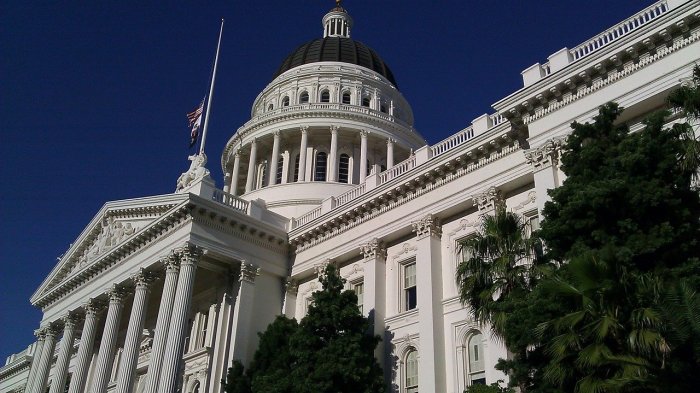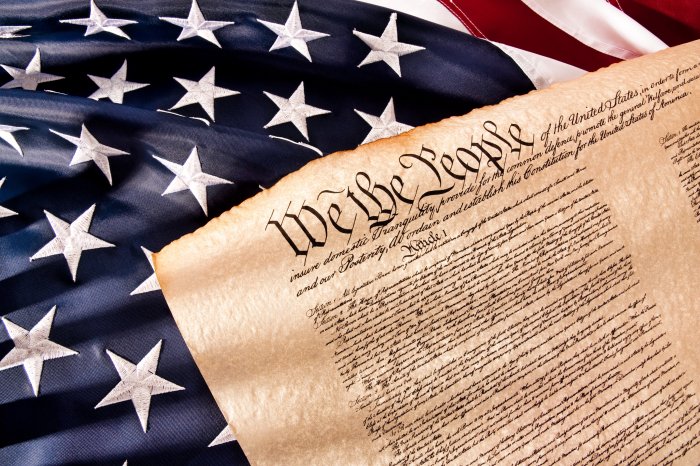United States Government: Our Democracy unveils the intricate tapestry of the American political system, providing a comprehensive exploration of its structure, evolution, and challenges. This treatise delves into the interplay between the three branches of government, the role of the people in shaping its course, and the historical forces that have molded its present form.
The document elucidates the concept of popular sovereignty, showcasing the diverse avenues through which citizens participate in governance. It underscores the significance of civic engagement, emphasizing the power of voting and other forms of political involvement.
The Structure of the United States Government
The United States government is a complex system of checks and balances designed to ensure that no one branch of government becomes too powerful. The three branches of government are the legislative branch, the executive branch, and the judicial branch.The
legislative branch is responsible for making laws. It is composed of the Senate and the House of Representatives. The Senate is composed of 100 members, two from each state. The House of Representatives is composed of 435 members, apportioned among the states based on population.The
executive branch is responsible for enforcing laws. It is composed of the President, the Vice President, and the Cabinet. The President is the head of state and government and is responsible for appointing the members of the Cabinet. The Cabinet is composed of the heads of the various departments of the government, such as the Department of State, the Department of Defense, and the Department of Justice.The
judicial branch is responsible for interpreting laws. It is composed of the Supreme Court, the federal courts of appeals, and the federal district courts. The Supreme Court is the highest court in the land and is responsible for interpreting the Constitution.
The federal courts of appeals are responsible for reviewing decisions made by the federal district courts. The federal district courts are responsible for hearing cases involving federal law.The three branches of government interact with each other in a variety of ways.
The legislative branch passes laws, which the executive branch enforces and the judicial branch interprets. The executive branch can veto laws passed by the legislative branch, and the judicial branch can declare laws passed by the legislative branch to be unconstitutional.The
system of checks and balances is designed to ensure that no one branch of government becomes too powerful. Each branch of government has the ability to check the power of the other two branches. This system of checks and balances has helped to ensure that the United States government has remained a democracy for over 200 years.
The Role of the People in the United States Government

The United States is a democracy, which means that the government is elected by the people. The people have a number of ways to participate in government, including voting, running for office, and serving on juries.Voting is one of the most important ways that people can participate in government.
By voting, people can choose the leaders who will represent them in government and make decisions on their behalf. Voting is also a way for people to hold their elected officials accountable. If people are unhappy with the way their elected officials are representing them, they can vote them out of office.Running
for office is another way that people can participate in government. Running for office gives people the opportunity to represent their constituents and make decisions on their behalf. Running for office is a challenging and time-consuming process, but it can also be a rewarding experience.Serving
on juries is another way that people can participate in government. Juries are responsible for deciding the guilt or innocence of people accused of crimes. Serving on a jury is a serious responsibility, but it is also an important way for people to participate in the justice system.The
people play a vital role in the United States government. By voting, running for office, and serving on juries, people can help to ensure that the government is responsive to their needs.
The History of the United States Government: United States Government: Our Democracy

The United States government has evolved over time from its colonial origins to the present day. The first permanent English settlement in North America was established at Jamestown, Virginia in 1607. The colonists were initially governed by a charter from the Virginia Company of London.
However, in 1624, the Virginia Company was dissolved and the colony became a royal colony.The American Revolution began in 1775 when the colonists declared their independence from Great Britain. The Declaration of Independence was signed on July 4, 1776. The American Revolutionary War lasted until 1783, when the Treaty of Paris was signed.
The Treaty of Paris recognized the independence of the United States.The Articles of Confederation was the first constitution of the United States. The Articles of Confederation created a weak central government. The central government had no power to tax or regulate commerce.
The Articles of Confederation were replaced by the Constitution of the United States in 1789.The Constitution of the United States created a stronger central government. The central government was given the power to tax, regulate commerce, and declare war. The Constitution also created a system of checks and balances to ensure that no one branch of government became too powerful.The
United States government has continued to evolve over time. The most significant changes to the government have been made through the adoption of amendments to the Constitution. The Constitution has been amended 27 times. The most recent amendment to the Constitution was adopted in 1992.
The Challenges Facing the United States Government

The United States government faces a number of challenges today. One of the most significant challenges is the national debt. The national debt is the total amount of money that the government owes to its creditors. The national debt has been growing steadily for decades and now stands at over $28 trillion.
The national debt is a major concern because it could lead to higher interest rates, inflation, and a weaker economy.Another challenge facing the United States government is the issue of climate change. Climate change is the long-term alteration of temperature and typical weather patterns in a place.
Climate change is caused by the release of greenhouse gases into the atmosphere. Greenhouse gases are gases that trap heat in the atmosphere. The burning of fossil fuels, such as coal, oil, and natural gas, is the main source of greenhouse gas emissions.
Climate change is a major concern because it could lead to more extreme weather events, such as hurricanes, floods, and droughts.The United States government is also facing a number of challenges related to national security. One of the most significant challenges is the threat of terrorism.
Terrorism is the use of violence or the threat of violence to achieve political goals. The United States has been the target of a number of terrorist attacks, including the September 11, 2001 attacks. The United States government is working to prevent future terrorist attacks by加强边境安全、情报收集和反恐合作。The United States government is also facing a number of challenges related to the economy.
One of the most significant challenges is the issue of income inequality. Income inequality is the gap between the rich and the poor. Income inequality has been growing in the United States for decades. The United States government is working to address the issue of income inequality by raising the minimum wage, expanding access to affordable housing, and providing tax breaks for low-income families.The
United States government faces a number of challenges today. However, the government is working to address these challenges and ensure the future of the United States.
The Future of the United States Government

The future of the United States government is uncertain. However, there are a number of trends that could shape the government in the years to come.One trend is the increasing diversity of the United States population. The United States is becoming increasingly diverse as more and more people from different racial and ethnic backgrounds immigrate to the country.
This diversity is likely to have a significant impact on the government as more and more people from different backgrounds are elected to office.Another trend is the increasing use of technology. Technology is playing an increasingly important role in the government as it is used to improve efficiency and transparency.
Technology is also being used to connect with constituents and provide them with information and services.The future of the United States government is uncertain. However, the government is working to address the challenges it faces and ensure the future of the United States.
Helpful Answers
What is the fundamental principle underlying the United States Government?
The United States Government is founded on the principle of popular sovereignty, where the ultimate authority rests with the people.
How do the three branches of government interact?
The three branches of government—legislative, executive, and judicial—operate under a system of checks and balances, ensuring that no one branch becomes too powerful.
What are some of the major challenges facing the United States Government today?
The United States Government faces challenges such as economic inequality, climate change, and geopolitical tensions.